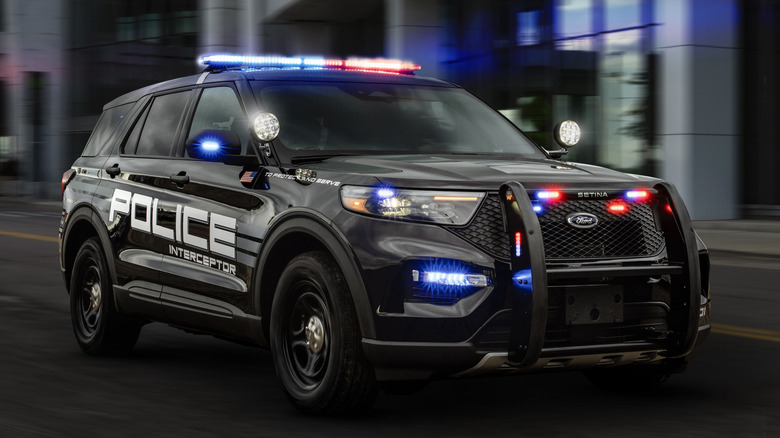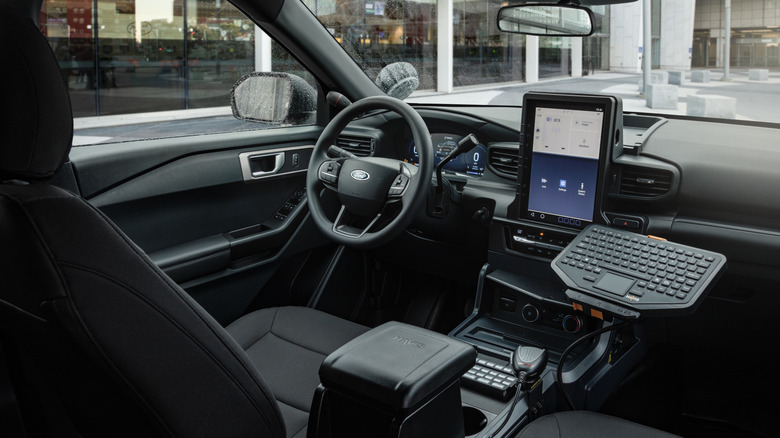Why A Lot Of Police Departments Switched From Sedans To SUVs
Many police departments across the country are switching from conventional sedans to SUVs as their primary means of transport. There are several reasons for this move. A big one is the need for police officers to have enough space and payload capacity for themselves and all the gear they must carry to perform their duties properly. This includes equipment like the computers, radios, lights, and sirens that must be installed in the vehicle, additional safety equipment that must be carried, tactical equipment stored in the cargo area, and depending on the specific police department's requirements, a full-size spare tire and wheel. Let's not forget the weight of two officers and any perps carried in the rear compartment who have seat belts to restrain them back there.
Another major reason is the lack of suitable sedans to fulfill a law enforcement role. After a production run of more than 20 years, the commonly-used Ford Victoria Police Interceptor was phased out in 2011. Also gone from the scene are the Dodge Charger Pursuit, the Chevrolet Caprice PPV, and the Ford Taurus, all no longer produced, which is also the case with these strange American police cars.
This leaves the mid-size Ford (Explorer) Police Interceptor Utility, the mid-size Dodge Durango Pursuit, the full-size Chevrolet Tahoe PPV, and the Chevrolet Blazer EV PPV as the primary SUVs for law enforcement agencies to choose from. There are additional pickup-type vehicles that are pursuit-rated, such as the Ford F-150 Police Responder and the Chevrolet Silverado 1500 PPV.
How do these police-rated SUVs perform?
Starting with their engines, police cars are different from the average vehicle. Some police car SUVs may chase down speeders, while others may sit with their engines idling for hours. These needs can require heavy-duty cooling systems, heavy-duty alternators, and coolers for the police car's transmission, oil, and power steering functions. Heavy-duty suspensions are also standard equipment on a police SUV, helping with both high-speed stability during pursuits and the occasional off-road excursion, as well as minimizing curb impacts that happen in the line of duty.
The performance testing of police vehicles by the Michigan State Patrol's Precision Driving Unit is recognized internationally. These tests have been done annually since the 1950s and serve as a guide for police purchasing agents and fleet managers across the country, helping them decide which vehicles to buy. The 2025 edition of the MSP's tests showed the following results. For 0-60 mph acceleration, the three quickest SUVs in the test were the Chevrolet Blazer EV PPV, with a four-run average time of 5.08 seconds, followed by the Ford PI Utility 3.0L EcoBoost AWD at a 6.17 second average, with the HEMI-powered Dodge Durango at a 7.3 second average in third place.
Top speed honors went to the Ford PI Utility 3.0L EcoBoost AWD at 148 mph, followed by the same SUV's hybrid and non-turbo versions at 136 mph. Chevys swept the braking tests, with the Blazer EV doing 60-0 mph in 128.16 ft., the Tahoe RWD doing 129.83 ft., and the Tahoe 4WD stopping in 133.81 ft.

